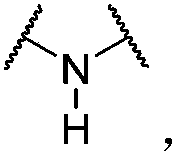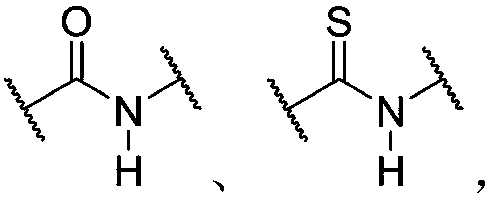Energy absorbing method based on hybrid dynamic polymer
A technology of polymers, polymer chains, applied in the field of energy absorption
- Summary
- Abstract
- Description
- Claims
- Application Information
AI Technical Summary
Problems solved by technology
Method used
Image
Examples
preparation example Construction
[0274] In the preparation process of dynamic polymers, three methods of mechanical foaming, physical foaming and chemical foaming are mainly used to foam dynamic polymers.
[0275] Among them, the mechanical foaming method is to introduce a large amount of air or other gases into the emulsion, suspension or solution of the polymer with the help of strong stirring during the preparation of the dynamic polymer to make it a uniform foam, and then through physical Or chemical changes make it shape and become a foam material. In order to shorten the molding cycle, air can be introduced and emulsifiers or surfactants can be added.
[0276] Wherein, the physical foaming method is to use physical principles to realize the foaming of the polymer during the preparation of the dynamic polymer, which includes but not limited to the following methods: (1) inert gas foaming method, that is, after adding Press the inert gas into the molten polymer or pasty material under pressure, and then ...
Embodiment 1
[0296] Dissolve equimolar equivalents of 2-hydroxyethyl acrylate and 2-mercaptoethanol in THF, add 3 mol% of hexylamine catalyst relative to the molar equivalent of mercapto, and obtain a compound containing mercapto-Michael addition through mercapto-Michael addition reaction of diols. Add 90ml of anhydrous tetrahydrofuran solvent into a dry and clean reaction flask, then add 8.00g of polyetheramine, 8.28g of diols containing mercapto-Michael addition bonds, 12.33g of dicyclohexylmethane diisocyanate, 1.68g of 1-ethyl - 3-(6-isocyanohexyl)urea (prepared by reacting ethylamine with excess 1,6-hexamethylene diisocyanate) and 0.24g stannous octoate were refluxed for 8 hours to obtain the dynamic polymer of the present invention. The apparent viscosity of the dynamic polymer is tested using a rotational viscometer, wherein the test temperature is 25°C and the shear rate is constant at 0.1s -1 , The apparent viscosity of the dynamic polymer was measured to be 17400mPa·s. The resu...
Embodiment 2
[0298] With THF as solvent and hexylamine as catalyst, equimolar equivalent hydroxyacrylate and 2-mercaptoethanol are prepared through mercapto-Michael addition reaction to obtain glycols containing mercapto-Michael addition bonds; An aqueous solution is used as a solvent, and tetrabutylammonium bisulfate is used as a catalyst, and epichlorohydrin is stirred and reacted with the diol obtained above at 30°C for 3 hours to obtain an epoxy monomer containing a dynamic covalent bond; hexylamine is used as The catalyst is an aliphatic diamine curing agent containing a mercapto-Michael addition bond prepared by reacting equimolar equivalents of aminoethyl methacrylate and 2-aminoethanethiol. After blending 80 parts by mass of the above-mentioned epoxy monomer and 20 parts by mass of tert-butyl (oxirane-2-ylmethyl) carbamate, the temperature was raised to 65°C, and it was designated as component A; Take 4 parts by mass of foaming agent Celogen-OT, 0.5 parts by mass of surfactant Plur...
PUM
| Property | Measurement | Unit |
|---|---|---|
| Elastic modulus | aaaaa | aaaaa |
| Elastic modulus | aaaaa | aaaaa |
| Elastic modulus | aaaaa | aaaaa |
Abstract
Description
Claims
Application Information
 Login to View More
Login to View More - R&D
- Intellectual Property
- Life Sciences
- Materials
- Tech Scout
- Unparalleled Data Quality
- Higher Quality Content
- 60% Fewer Hallucinations
Browse by: Latest US Patents, China's latest patents, Technical Efficacy Thesaurus, Application Domain, Technology Topic, Popular Technical Reports.
© 2025 PatSnap. All rights reserved.Legal|Privacy policy|Modern Slavery Act Transparency Statement|Sitemap|About US| Contact US: help@patsnap.com



